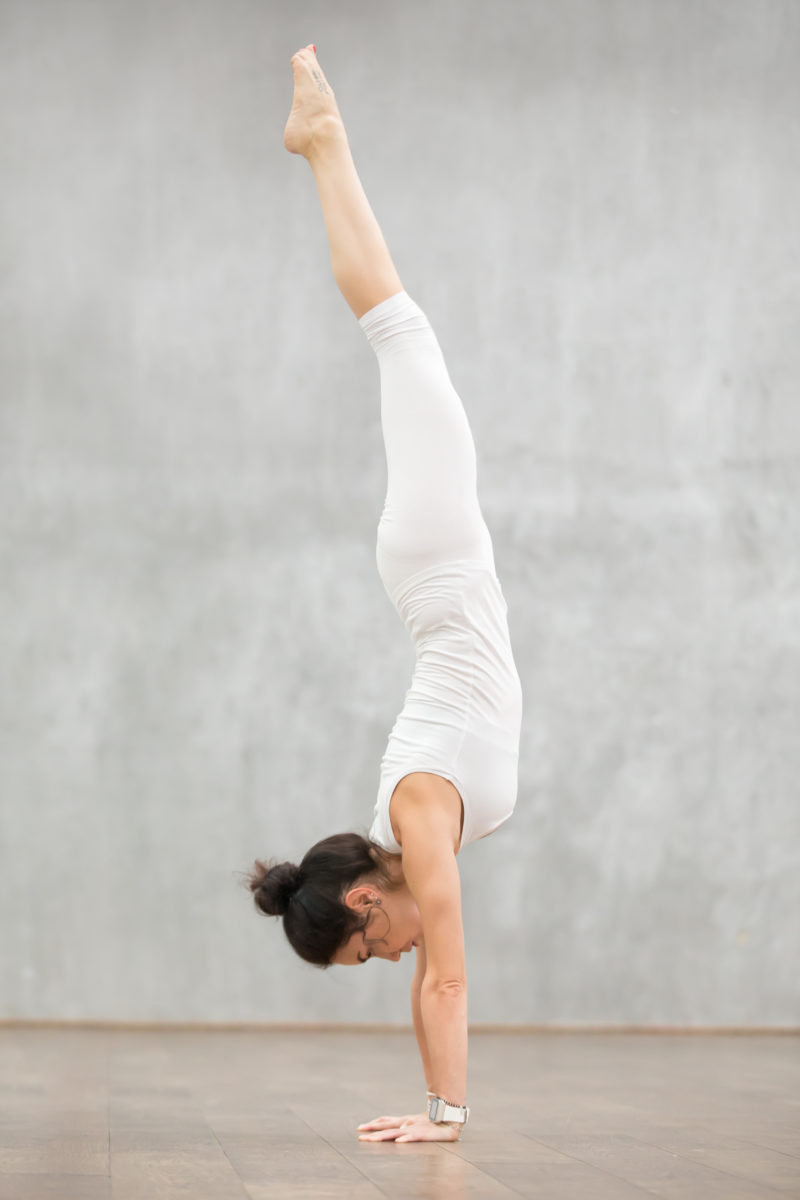This pose will change your perspective! Basically it is Urdva Hastasana but upside down. The element of fear that often comes with trying this pose tend to origin in the getting up as kicking means losing control and possibly falling over. The challenge here is to master the entry properly which requires a lot of core strength. Below we outline step by step a midway route to come up.
Pose Summary

Steps
Step 1
Start in Adho Mukha Savasana. Hands shoulder distance apart and fingers spread wide so you can get a good grip of the mat to improve balance. Your middle fingers are parallel and the inside of your elbows are facing each other.
Step 2
Walk your feet a little closer to your hands.
Step 3
Lift one leg up, normally it comes automatically which leg you prefer to raise. Keep the hips square to the ground, leg active and stretched out.
Step 4
Come up on your toes on the foot that remains on the floor. Bend the knee and make a light kick coming up onto your hands hugging the knee towards your belly toes pointing up. This step is a good way to activate the core and gain control of the pose to not fall over. It also ensures you keep a slight pike in your hips instead of creating a banana shape of your body.
Step 5
Start straightening the bent leg raising it up to the sky.
Step 6
Press down into your hands. Keep your core and glutes active to remain in balance. Thighs are internally rotated and your toes should be pointed, reaching high to the sky. Take as many deep breaths as you can hold the pose.
Step 7
Slowly lower one leg down, followed by the second. Come down into Child’s pose and rest for a few breaths.
Modifications
Easiest way to come up is by kicking up, however the energy produced in that action is more challenging to control. You can practice this against the wall as it will stop you from falling over or alternatively with a spotter who catches your legs.
Second level would be to bring one knee towards the chest as outlined above.
The third and more advanced level is to use the core and leg strength to lift the legs up without jumping at all. Either by keeping your legs together straight or taking them out wide coming up from Prasarita Padottanasana.
Benefits
- Strengthens the shoulders, arms and wrists.
- Improves blood circulation in your brain and stimulates the pituitary and hypothalamus glands.
- Reduces strain on the heart and improves cardiovascular functioning.
- Being upside down changes perspectives and allows you to connect with another side of your higher self.
- Increases confidence, balance and focus.
- Increases body heat.
Contraindications
- Avoid if you suffer from wrist or shoulder injuries.
- Avoid this pose if you suffer from high blood pressure, heart conditions or have a headache.
- Avoid if being pregnant and do not already have this pose in your practice.

